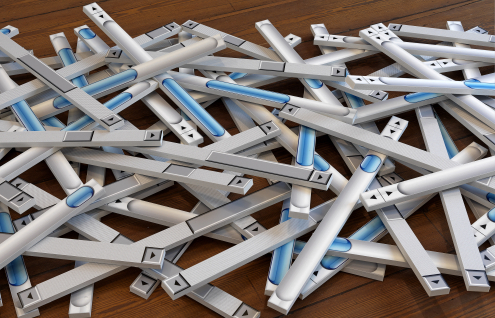No Content: Contemplations on Software
Jan Robert Leegte

No Content: Contemplations on Software
Jan Robert Leegte
Amsterdam, 6 May - 17 Jun '23
Opening: 6 May, 17.00 - 19.30 hrs
Upstream Gallery is proud to present the third solo exhibition of Jan Robert Leegte (1973, NL) with the gallery titled No Content.
In 1964 Marshall McLuhan coined the phrase “The Medium is the Message”, in which he sought to point out that the content of media is not defined by the big changes in society, but by the character of the medium itself. An insight that seems relevant more than ever, in a world where consensus reality and democracies are eroding by the mere presence and dominance of social media.
This overlooking of the medium, blinded by the haze of content, also applies to the experience we have on a personal scale when interacting with media and specifically with the software of the networked computer. We get so distracted by the content, we are nearly always oblivious to the carrier and reality that holds it.
This exhibition can be seen as a protest against the endless waves of content that suffocate us personally and as a society, but above everything else, it should be seen as a contemplation on software.
JPEG
Since the early 90s, compression has been the driving force behind the image-based internet. Without compression, there would be no Netscape, social media, NFTs, or AI-generated images. JPEG compression has specifically enabled photography-based imagery on the net. It has always served that purpose, and over time became the default for showing high-quality images online. Nevertheless, compression always leaves a trace, which has become the slightly distorted lens through which the network sees the world of uploaded images.
The works from the JPEG series try to create an image programmatically fully expressing that signature compression. An image that is made from barely nothing, yet fully present in its blazing appearance. A work deeply material, expressing itself through the language of code and codec transferred to a plate of aluminum. This is not a JPEG depicting an image. The JPEG is the image itself.
Where abstract expressionists cut out the depiction in painting, attempting to make the artist convey pure emotion, JPEG cuts out the artist's emotion and lets it emerge from within the algorithm.
Rise and Fall
Washing over both spaces of the exhibition is the work Rise and Fall. The work is a live directional generative 6-channel audio piece simulating the sound of ocean waves. Using live sound synthesis building on layers of noise, each speaker is targeted individually. Through programming the relationships between the different channels, the sound of the waves will traverse through the space from one side to the other, arising, passing, and breaking. Always unique in every moment and flowing eternally, exactly like ocean waves. But at its heart, the sound is built up of layers of white noise. Static noise, a source representing nothing and containing no information whatsoever. Sound design by Gideon Kiers.
Broken Images
The most infamous broken link is the 404 error. The error stands for “file not found”. An example is an image on a webpage that refers to an address that is non-existent. When this happens, the browser shows a beveled outline of the missing image with an icon of a broken image in the top left corner.
The vast majority of NFTs are minted links to images stored elsewhere on servers. In the NFT collection Broken Images, the absence of that image is shown by minting broken links. Using the broken image as the visual element, the work is produced as small web pages that contain compositions of broken images and are hosted on-chain on the Ethereum blockchain. The webpages are responsive and will shape-shift both according to the operating system and browser that you choose and transform in the future to reflect the underlying technology.
Scrollbars
Washed ashore from decades ago are numerous obsolete scrollbars. A scrollbar is an interface to a content space. A set space that can be moved around for us to explore it. With the scrollbar decoupled from its original purpose, it points to nothing, becoming a broken link. It becomes a sculptural entity with an empty space as an appendix. Leaving behind the memory of decades of internet culture.

